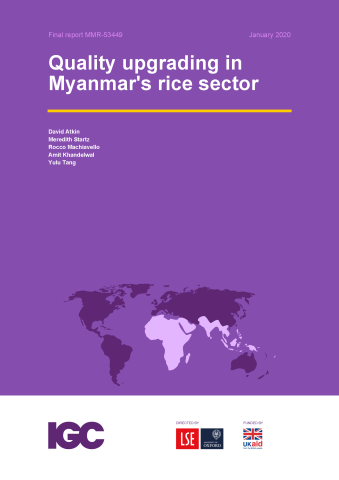Quality upgrading in Myanmar's rice sector
-
Atkin et al Final report January 2020
PDF document • 2.67 MB
Rice industry has a long tradition in Myanmar and is one of the pillars of economy. Until 1963, Myanmar was the largest rice exporter in the world. While Myanmar still produces some of the most highly valued varieties, quality, exports, and productivity have all lagged in recent decades. With more countries investing in rice industry these years, Myanmar rice industry faces much more fierce competition on the international market, especially on the high-quality rice market. For example, though Myanmar Paw Sam rice was awarded the world’s best rice at the Rice Trader’s World Rice Conference in 2011, Thailand’s jasmine rice or Sushi rice from Japan seem to be more famous worldwide. Using customs export data between year 2011 and 2017, it shows that the average export unit price of rice is decreasing in recent years. In addition, among all rice varieties, Myanmar currently is mainly exporting low quality rice, such as whole broken rice and 25% broken rice, instead of lower broken-rate rice which enjoys higher prices on the international market. Therefore, how to design policies to give relevant stakeholders correct incentives and achieve the quality upgrading can be crucial.






